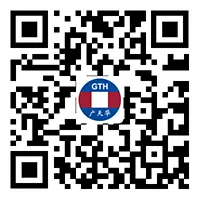- English
- Español
- Português
- русский
- Français
- 日本語
- Deutsch
- tiếng Việt
- Italiano
- Nederlands
- ภาษาไทย
- Polski
- 한국어
- Svenska
- magyar
- Malay
- বাংলা ভাষার
- Dansk
- Suomi
- हिन्दी
- Pilipino
- Türkçe
- Gaeilge
- العربية
- Indonesia
- Norsk
- تمل
- český
- ελληνικά
- український
- Javanese
- فارسی
- தமிழ்
- తెలుగు
- नेपाली
- Burmese
- български
- ລາວ
- Latine
- Қазақша
- Euskal
- Azərbaycan
- Slovenský jazyk
- Македонски
- Lietuvos
- Eesti Keel
- Română
- Slovenski
- मराठी
- Srpski језик
Report on Ocean Transportation and Packaging Requirements, Testing, and Accident Prevention for Lighting Products
2024-12-12
1. Basic Requirements for Ocean Transportation and Packaging
1.1 Protective Packaging
Lighting products are typically fragile and of high value, necessitating robust protective packaging to withstand the rigors of ocean transportation. The selection of packaging materials should consider the size, shape, and weight of the lighting products. Common packaging materials include foam plastic, bubble wrap, cardboard, and more.Foam Plastic and Bubble Wrap: These materials are excellent for cushioning and absorbing impacts, protecting lighting products from damage.Cardboard and Cartons: Sturdy cardboard boxes provide a rigid outer shell, preventing compression and external damage.When packaging lighting products, appropriate methods should be employed based on their shape and structural characteristics. For instance, smaller lighting fixtures can be wrapped in inner boxes and further protected with additional layers of packaging material. Larger items may require the use of shock-absorbing film and additional padding.
1.2 Secure Fixation
Ensuring that lighting products are securely fixed within the packaging is crucial to prevent movement during transit. This can be achieved through the use of fillers, foam pads, or specialized fixing devices like straps or ties.Fillers: Use foam, bubble wrap, or crumpled paper to fill any gaps between the lighting product and the packaging, preventing movement.Fixing Devices: For larger items, consider using straps or ties to secure the product within the packaging. Ensure that the fixation is neither too tight (which could damage the product) nor too loose (which would allow movement).1.3 Proper Labeling and Marking
Clear and concise labeling is essential for identifying and handling lighting products during transportation. The outer packaging should be marked with:Fragile Labels: Highlight that the contents are fragile, encouraging careful handling.Directional Arrows: Indicate the correct orientation of the package to prevent upside-down or incorrect placement.Country of Origin and Destination Information: Provide clear information about where the product is coming from and going to, facilitating customs clearance and logistics tracking.1.4 Compliance with International Standards
When shipping lighting products internationally, it is crucial to comply with international packaging and transportation standards. This includes adhering to regulations set by organizations like the International Safe Transit Association (ISTA) and the International Maritime Organization (IMO).
2. Testing Standards for Packaging
2.1 ISTA Testing Standards
ISTA has developed a series of testing standards that are widely used in the packaging industry to assess the safety performance of transportation packaging. For lighting products, ISTA-1A is a commonly used test procedure, which focuses on vibration and shock testing for packages weighing 68 kg or less.
ISTA-1A Test Procedure:Sample Requirements: The sample must be identical to the product being shipped, with packaging materials and methods consistent with those used for shipping.Vibration Test: The sample is placed on a vibration table and subjected to a specific number of vibrations (14,200 cycles) at a frequency range of 150-300 cycles per minute (CPM). Halfway through the test, the sample is rotated 90 degrees.Drop Test: The sample undergoes a series of drop tests (10 drops in total, including one corner, three edges, and six faces) at specified heights and impact speeds based on the sample's weight.Assessment: After testing, the packaging and product are evaluated for any damage. The packaging seams must remain intact, and the lighting product should show no scratches, deformations, loose parts, or damage to electrical components.2.2 Additional Testing Considerations
In addition to ISTA testing, other tests may be considered based on the specific characteristics and intended use of the lighting products:Temperature Testing: For products that may be exposed to extreme temperatures during transportation, temperature testing is essential to ensure that packaging materials and the product itself can withstand these conditions.Humidity Testing: High humidity can affect the performance and longevity of electronic components. Testing under controlled humidity conditions can help identify potential issues.Shock Testing: This test simulates the sudden impacts that may occur during handling and transportation, ensuring that the packaging can adequately protect the product.3. Prevention of Accidents During Transportation
3.1 Secure Loading and Unloading
Proper loading and unloading practices are crucial for preventing accidents during transportation. This includes:Using Appropriate Equipment: Ensure that forklifts, cranes, and other handling equipment are in good working condition and appropriate for the weight and size of the lighting products.Training Personnel: Provide comprehensive training to personnel involved in loading and unloading operations, emphasizing safe lifting techniques and the importance of handling fragile items with care.Supervision: Always supervise loading and unloading operations to ensure compliance with safety procedures and to promptly address any issues.3.2 Secure Fixation on Transport Vehicles
Once loaded onto transport vehicles, lighting products should be securely fixed to prevent movement during transit. This can be achieved through the use of straps, chains, or other fixing devices. Ensure that the fixation is evenly distributed to maintain the stability of the load and prevent overloading.
3.3 Monitoring and Tracking
Using tracking and monitoring technology can help identify potential issues during transportation and facilitate prompt response. This includes:GPS Tracking: Implement GPS tracking systems to monitor the location and movement of transport vehicles.Temperature and Humidity Monitoring: For sensitive lighting products, install sensors to monitor temperature and humidity levels within the packaging.Regular Checks: Schedule regular checks during transit to ensure that the packaging remains intact and that the products are not experiencing any adverse conditions.3.4 Insurance and Risk Mitigation
Purchasing transportation insurance can provide an additional layer of protection against potential losses. Ensure that the insurance policy covers the full value of the lighting products and includes coverage for damage, loss, and delays.
4. Customs Clearance and Import Regulations
When shipping lighting products internationally, familiarity with customs clearance procedures and import regulations is essential. This includes:Classification and Coding: Correctly classify the lighting products according to their material, function, and light source, and assign the appropriate customs codes.Documentation: Prepare comprehensive documentation, including invoices, packing lists, certificates of origin, and any required import licenses or permits.Compliance with Standards: Ensure that the lighting products comply with the safety and performance standards of the destination country. This may involve obtaining certifications or undergoing additional testing.Conclusion
The safe transportation and packaging of lighting products via ocean freight require careful planning and adherence to international standards. By selecting appropriate packaging materials, employing secure fixation techniques, and adhering to testing standards, manufacturers and shippers can minimize the risk of damage during transit. Additionally, proper labeling, customs clearance procedures, and risk mitigation strategies further ensure the successful delivery of lighting products. By following these guidelines, lighting products can arrive at their destination in pristine condition, satisfying both customers and manufacturers alike.




